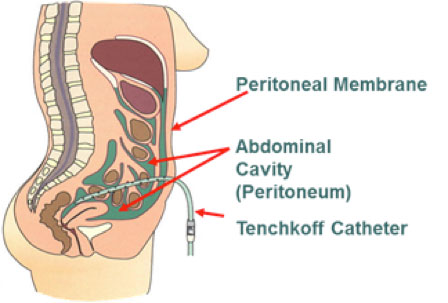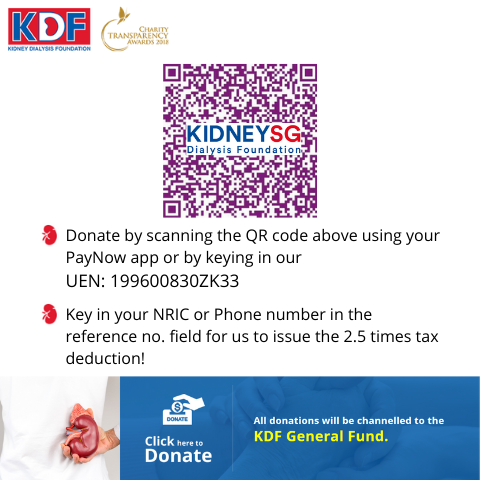Peritoneal Dialysis
Peritoneal dialysis is a form of dialysis that occurs inside the body. Dialysis solution will flow into the peritoneal (abdominal) cavity through a catheter and the peritoneal membrane (petrionuem) acts as a filter.
Waste products and excess water from the body will pass through the peritoneal membrane into the dialysis solution. When the filtering process is complete, the waste-filled solution is drained from the peritoneal cavity into a bag and is discarded.
Fresh dialysis solution is then introduced into the abdominal cavity through the catheter again and the process is repeated. Each exchange takes about 45 minutes.
There are two forms of peritoneal dialysis:
(1) Continuous Ambulatory Peritoneal Dialysis (CAPD)
- Patients are required to perform four exchanges during the day.
(2) Automated Peritoneal Dialysis (APD)
- Exchanges are performed by a machine during the night while the patient is asleep.

Advantages & Disadvantages of Peritoneal Dialysis
Advantages
- Can be done at home
- Patient's involvement in self-care
- Greater control over schedule
- Less diet and fluid restrictions
- More steady physical condition as it provides slow, continuous therapy
- Most similar to original kidneys. Can be done in the night (APD)
- Provide less severe cardiovascular instabilities in patients with underlying heart disease
Disadvantages
- Four exchanges per day
- Permanent external catheter
- Change of body image
- Potential weight gain
- Some risk of infection
- If on APD, patient will be tied to the machine at night
- Storage space is needed for supplies

